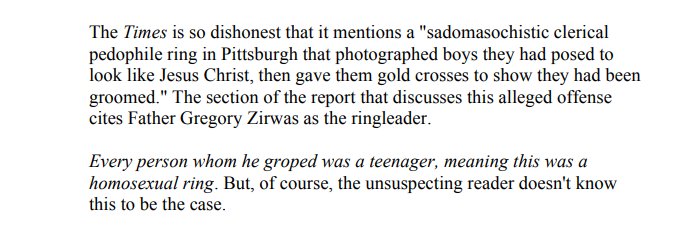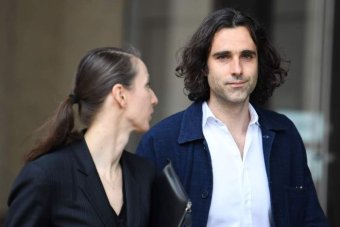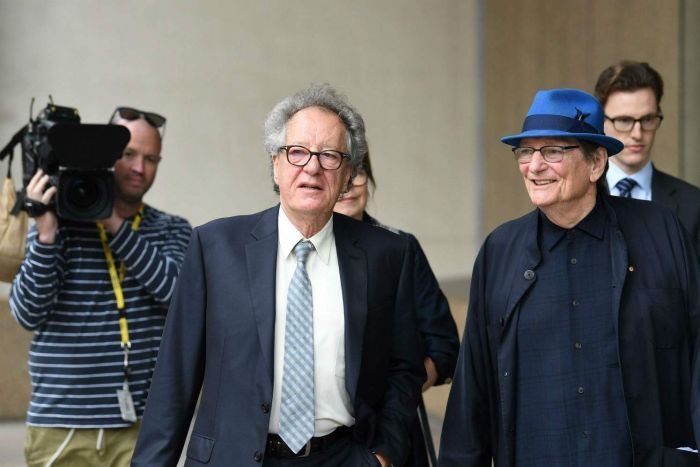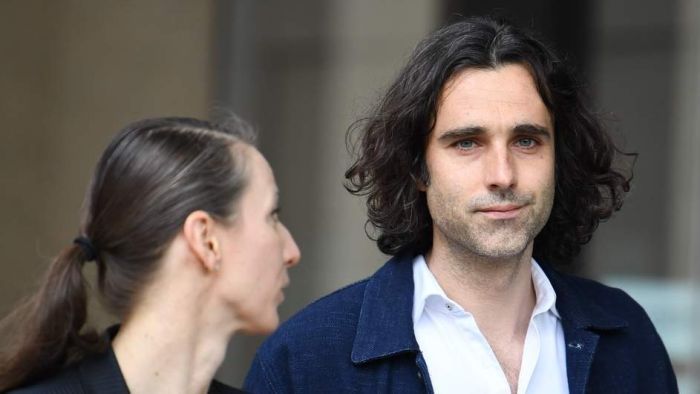not either or; judge & executioner.
But as with all dictators and despots, my day would come… such is life.
not either or; judge & executioner.
But as with all dictators and despots, my day would come… such is life.
l reckon it will come for Duterte as well. Once he is voted out, people will turn on him and he’ll end up in gaol… or the US.
You’ve missed out a couple of steps. First the shoot on sight policy will be extended to terrorists, street violence and other undesirables. Step 2 is when vocal agitators against the great and good President become fair game. That can go on for quite a long time.
But all in the interests of a better society of course.
I would start with lawyers, then teachers and then umpires
What peices of ■■■■.
catholic hierarchy and accountability.
The arrogance is sickening.
Scum.
From the Washington Post:
Why the Vatican continues to struggle with sex abuse scandals
August 12
VATICAN CITY — With revelation after revelation, a new wave of sexual abuse scandals is rocking the Roman Catholic Church and presenting Pope Francis with the greatest crisis of his papacy.
In Chile, prosecutors have raided church offices, seized documents and accused leaders of a coverup. In Australia, top church figures are facing detention and trials. And in the United States, after the resignation of a cardinal, questions are swirling about a hierarchy that looked the other way and protected him for years.
The church has had more than three decades — since notable abuse cases first became public — to safeguard victims, and itself, against such system failures. And, in the past five years, many Catholics have looked to Francis as a figure who could modernize the church and help it regain its credibility.
But Francis’s track record in handling abuse is mixed, something some outsiders attribute to his learning curve or shortcomings and others chalk up to resistance from a notoriously change-averse institution.
Analysts who have studied the church’s response to sexual abuse, and several people who have advised the pope, say the Vatican has been unable to take the dramatic steps that can help an organization get out from under scandals — and avoid their repetition.
“Each new report of clerical abuse at any level creates doubt in the minds of many that we are effectively addressing this catastrophe in the Church,” Cardinal Sean O’Malley, the archbishop of Boston, warned last month. Failure to take action, O’Malley said, “will threaten and endanger the already weakened moral authority of the Church.”
Cardinal Theodore McCarrick, 88, resigned July 28, after the church in June found he was credibly accused of sexually abusing a teenager nearly 50 years go. (Reuters)
Francis is credited with some meaningful moves. Last month, he accepted the highest-level resignation to date when Theodore McCarrick stepped down from the College of Cardinals. The former archbishop of Washington and longtime church power broker is accused of sexually abusing adults and minors. He faces a church trial in which he could be defrocked entirely.
But the pope has also had notable missteps. During a January trip to South America, he drew widespread criticism by saying he was convinced of the innocence of Bishop Juan Barros , accused of covering up the acts of a notorious abuser.
Francis sought to recover from that episode by sending two investigators to Chile, apologizing for his “serious errors” in handling the crisis and making a reference — unprecedented for a pope — to a “culture of abuse and coverup.” He invited Chilean abuse victims to the Vatican. He also called Chile’s 34 bishops to Rome, where, according to a letter that was leaked to the Chilean media, he accused them of failing to investigate possible crimes and destroying evidence. The bishops offered to step down en masse. So far, Francis has accepted five of those resignations.
Yet the church has struggled with a more comprehensive effort to close the chapter on sexual abuse.
Whereas transparency is typically advised, the church remains quiet about its investigations and disciplinary procedures. It does not release any data on the inquiries it has carried out. A proposed tribunal for judging bishops accused of negligence or coverup was quashed by the Vatican department that was supposed to help implement it. And, rather than being fired and publicly admonished, offending church leaders are typically allowed to resign without explanation.
“The church doesn’t like removing bishops,” said the Rev. Thomas Reese, a Jesuit priest and a senior analyst at the Religion News Service. “Bishops are vicars of Christ in their diocese. They’re not just McDonald’s franchise owners or local managers that can be fired by the CEO. And the church has always been reluctant to give in to political pressure to remove them.”
Francis has called on churches to maintain a “zero tolerance” policy and warned about the “sin of covering up and denial, the sin of the abuse of power.” But the Vatican declined to distribute to bishops conferences suggested guidelines, drawn up by the commission advising Francis on sexual abuse, on how to respond to abuse complaints and cooperate with civil authorities.
Even when the Vatican does take action, resolution comes “at a very glacial pace,” said Juan Carlos Cruz, who was among the Chilean abuse victims who met for several days with Francis this past spring.
Cruz said he tried to tell the pope bluntly that a deeper shake-up was still needed. He specifically mentioned Francisco Javier Errázuriz, a member of the pope’s powerful nine-member advisory Council of Cardinals, who victims have long said ignored their abuse accusations and tried to discredit them. Errázuriz has denied wrongdoing.
“[The pope] asked us to give him time to act,” Cruz recalled. “He said, ‘I have to pray about this and let the Holy Spirit guide me on what I have to do.’ ”
Meanwhile, in the wider world, the cultural ground is shifting, and other forces are taking the lead on accountability.
A separate movement fighting abuse and harassment in the workplace has helped spread awareness about victims while diminishing skepticism about their stories.
At the same time, law enforcement agencies have been pursuing abuse cases in countries that once treated the church with deference. In Australia, some state and territory governments are even going after one of the church’s most sacred tenets and are on the verge of enforcing new laws requiring priests to report child abuse that they learn of during confessions. In the United States, the Catholic Church is bracing for the release of a 900-page grand jury report into sex crimes across six dioceses in Pennsylvania.
There have been competing calls within the American church on strengthening oversight of the hierarchy. Church leaders in Albany and Atlanta took the notable step of suggesting the involvement of expert laypeople, either to investigate or chart reforms.
“I think we have reached a point where bishops alone investigating bishops is not the answer,” said Bishop Edward Scharfenberger, of the Roman Catholic Diocese of Albany. “We bishops want to rise to this challenge, which may well be our last opportunity considering all that has happened.”
A similar conversation, about how to strengthen the response to abuse, has played out for several years in the Vatican — particularly within the Pontifical Commission for the Protection of Minors, which Francis created a year after he became pope. But little has come of the commission’s ideas.
In 2015, Francis approved its proposal of a tribunal, placed within the Vatican’s powerful doctrine office, that would assess cases of bishops accused of concealing or neglecting abuse. The tribunal, though, was never created. Four former members of the commission, as well as outside analysts, say the idea was thwarted by the Congregation for the Doctrine of the Faith. Some outside analysts say the objection could have been on legal or logistical grounds.
In an interview published last year with the Corriere della Sera, Cardinal Gerhard Müller, then the head of the doctrine office, said the Vatican already had the “tools and legal means” to handle cases. Vatican watcher Marco Politi said congregation members and others in the Vatican hierarchy were also concerned about opening a “Pandora’s box.”
“This would mean hundreds of cases that would then bounce back to Rome with a huge media impact,” said Politi, author “Pope Francis Among the Wolves,” a papal biography. “It would signify the beginning of hunting season on culprits.”
In turn, Francis used another method to bolster accountability of the church hierarchy, issuing an apostolic letter that made it clear that bishops could be removed from office for negligently handling sexual abuse. But under the current system, any of five different Vatican congregations can be involved in investigating bishops, depending on the accused person’s role and affiliation within the church, and also on whether he has been accused of coverup or abuse. Coverup cases are handled by the same congregations that help to appoint bishops.
“It’s a potential conflict of interest,” said Davide Cito, a canon lawyer at Rome’s Pontifical University of the Holy Cross. “That’s absolutely an issue.”
The stalled effort to launch the tribunal prompted the resignation from the commission of Marie Collins, an Irish abuse survivor. Current and former members of the commission said that they are not given data and information on abuse-related cases being handled by the Vatican. Krysten Winter-Green, a former commission member who was a longtime counselor for abuse victims, said they were up against a “domain of secrecy.”
“The crime in the Catholic Church remains causing scandal, not covering up,” said Anne Barrett Doyle, co-director of the site BishopAccountability.org, which tracks sexual abuse cases. “Bishops all over the world are not being forthcoming.”
Whether the law is changed in Australia around what is said in the confessional about abuse of children or not -
I believe the Catholic Church who are a law unto themselves, will say one thing as public policy and do the other. And they will continue to protect those who break the law because the paedophile rings are more elastic and mobile at the top end of society than they are at the bottom.
Clearing out the books at the old man’s joint today, i found a pamphlet by George Pell when he was just a Rev about Catholic schools. Now in the bin.
There was another book i’m ashamed to say he had that met the same fate - foreword by Christopher Monckton.
What was the pamphlet about? Did you look at it?
Altered for accuracy.
What was the pamphlet about? Did you look at it?
Had a quick look. It was about Catholic education. It harked of the 50s.
What a fantastic organisation.


Fair dinkum couldn’t make this ■■■■ up.
I heard this priest’s name mentioned in connection with another dodgy priest, Fr Tony Bongiorno, who I think is suspected of having murdered Maria James about 30 years back.
Fr Tom O’Keeffe was our assistant priest in St Kilda West back in the 60’s when I did my little Catholic boy duty as an altar boy. As previously mentioned, often by Reboot, I was probably an ugly child so avoided his blandishments.
I do remember that he told me to be a man and start smoking (“but that doesn’t look like a cigarette, Father”) and called in my Dad to tell him I did not show him due respect. The old man was totally unimpressed with his suggestions.
But unsurprisingly, he was a Carlton fan. Not saying all Carlton fans are paedo’s, but probably 98, 99%.
http://brokenrites.org.au/archives/nletter/page270-thomas-okeeffe.html
Not saying all Carlton fans are paedo’s, but probably 98, 99%.
Generous assessment.
Updated 44 minutes ago
 PHOTO: Actor Mark Winter arrives at court to give evidence about his King Lear colleagues. (AAP: Dean Lewins)
PHOTO: Actor Mark Winter arrives at court to give evidence about his King Lear colleagues. (AAP: Dean Lewins)
RELATED STORY: Actress says colleagues and culture ‘enabled’ Geoffrey Rush’s alleged abuse
RELATED STORY: Actress felt ‘belittled and shamed’ by Geoffrey Rush’s alleged sexual gestures
One of Geoffrey Rush’s co-stars has told a Sydney court he saw the actor cup the bottom of actress Eryn Jean Norvill’s breast during a rehearsal of King Lear.
Actor Mark Winter, who played Edgar during the Sydney Theatre Company (STC) production in 2015-16, gave evidence in Mr Rush’s defamation case against Nationwide News.
Mr Rush is suing the company, which publishes The Daily Telegraph newspaper, and one of its journalists Jonathan Moran over articles printed late last year that claimed he behaved inappropriately towards a younger female colleague during the production.
That colleague was subsequently revealed in legal proceedings as Ms Norvill.
“I can say unequivocally that his hand touched her breast,” Mr Winter told the court while being cross-examined by Mr Rush’s barrister Bruce McClintock SC.
Mr Winter said during the final scene of King Lear, Mr Rush would usually touch Ms Norvill’s “shoulders, hair, face, body and side” and would lift her up into a cradling position.
But he said one night, Mr Rush did something different from what had been rehearsed.
“On that occasion I saw Geoffrey’s hand cupping around the bottom of the breast, which was something I hadn’t seen on stage,” he said.
“The nipple was not covered, it was sort of more a cupped position, the side and under, but not like a squeeze.”
Mr Winter said he thought Mr Rush had his hand on her left breast for about five seconds.
“It was long enough for me to have a series of thoughts that took me outside the action of the play,” he said.
 PHOTO: Geoffrey Rush (L) arrives at court with director Fred Schepisi. (AAP: Dean Lewins)
PHOTO: Geoffrey Rush (L) arrives at court with director Fred Schepisi. (AAP: Dean Lewins)
Mr Winter also said in a different instance he saw Mr Rush performing a “Three Stooges style skit” while kneeling over Ms Norvill, who was lying on the floor, and heard others in the cast laughing.
“It was a sequence of quick jokes … and joke gesture at the end,” Mr Winter said.
"A boob squeezing gesture.
“They were in the final moments of the play.”
“I know that people laughed at the time … I tuned in late. That’s all I can say about that.”
Mr Winter said both Ms Norvill and Mr Rush were his friends and that he had studied and performed with Ms Norvill numerous times.
He also said Mr Rush had given him a reference after the production of King Lear.
He described Mr Rush as “a respected figure and a friend”.
The trial continues.

Actor Mark Winter tells a Sydney court Geoffrey Rush unequivocally cupped the bottom of actress Eryn Jean Norvill's breast during a performance of King Lear.
When the Catholic church has prize fools like this guy to defend them, then you know that the church is in deep trouble.

Catholic League president Bill Donohue defends predatory priests by claiming it’s not rape if the child isn’t penetrated.